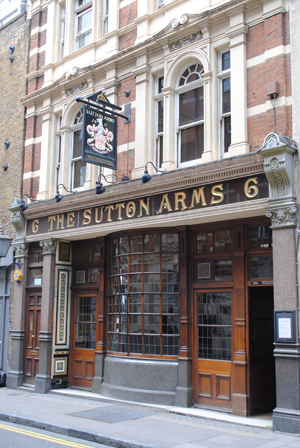
• Larry the cat celebrated his 10th anniversary in Downing Street this week. Officially the “Chief Mouser to the Cabinet Office”, Larry first came to Number 10 on 15th February, 2011, from the Battersea Dogs & Cats Home and has since been spotted many times in and around the property going about his duties (or seeing off rivals like the now retired Palmerston, the Foreign Office cat). Larry has served three Prime Ministers during his time in the seat of power – David Cameron, Theresa May and now Boris Johnson – and met with various world leaders (famously apparently taking a liking to US President Barack Obama and being spotted sleeping under Donald Trump’s car). Larry tweeted on Tuesday – the day of his “Larryversary” – that he has no plans of retiring at this stage.
• A series of auctions involving a collection of 260 London street signs started this week. Westminster City Council is selling the signs – which include Abbey Road NW8 (estimated price tag of £1,000-£2,000), Pimlico Road SW1 (£100-£200), Westbourne Park Road W2 (£100-£200) and Belgrave Place SW1 (£80-£120) – through Catherine Southon Auctioneers until 3rd March. The distinct signs were first created by Sir Misha Black in 1967. Head here for details.
• Looking further afield and English Heritage has put out a call for people with connections to the Cichociemni – the name for a group of Polish Home Army parachutists, many of whom trained at Audley End House, who were dropped behind enemy lines in Poland to begin fighting for the liberation of their homeland – to share their stories. Monday marked the 80th anniversary of the operation involving the elite fighters. Some 527 of them completed their training at the Jacobean stately home in Essex where their presence is today remembered in a memorial and fragmentary remains such as a scrap of graffiti in the coal gallery candle store, remnants of a timetable in a former briefing room and insulators for telephone wires which remain in some trees. “We’d love to hear from the public who have a connection or story to share about the Cichociemni at Audley,” said Andrew Hann, an historian with English Heritage which looks after Audley End House. “We’re particularly interested in hearing from those in the local area at the time, who may remember hearing bangs in the night, or seeing troops crossing fields in the darkness. Perhaps unsurprisingly, given that they were highly trained to be both ‘silent and unseen’ they left little obvious trace.”
Send items for inclusion to exploringlondon@gmail.com
